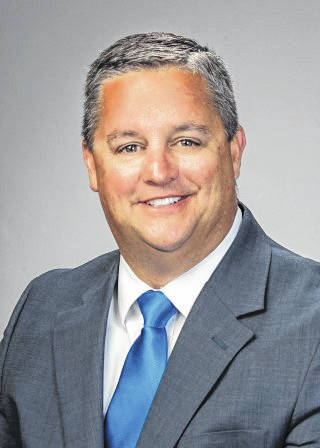
Opponents of House Bill 6, which was co-sponsored by State Rep. Shane Wilkin (R-91st District) and was signed into law by Gov. Mike DeWine on July 23, submitted a second summary petition to the Ohio Attorney General and Secretary of State last Friday in an effort to stop what they call a billion dollar bailout of two nuclear power plants on the shores of Lake Erie and the gutting of Ohio’s renewable energy standards.
Ohioans Against Corporate Bailouts (OACB) is a ballot issue committee opposed to House Bill 6. It is seeking to place a referendum on the November 2020 ballot.
Friday’s submission included revised summary petition language and the signatures of 2,246 Ohio voters.
Both the attorney general and secretary of state’s office have until Aug. 30 to certify the petition, the group said.
If approved, the referendum campaign said it would begin collecting the roughly 265,000 signatures of Ohio voters needed to place the issue on the November 2020 general election ballot, with the deadline for obtaining those signatures two months away on Oct. 21, 2019.
Wilkin previously told The Times-Gazette that his view of the bill from the very beginning was that it had to bring with it a rate reduction for consumers, and despite the differences in what he originally co-sponsored and what the governor signed, he still holds that it’s a good bill.
Gene Pierce of OACB strongly disagreed with Wilkin’s assessment, describing House Bill 6 as “a wrong-headed decision that makes government the final judge as to what companies survive and which ones don’t,” adding that in his group’s view, it should be the free market and free market prices that decide, and not “a universal hike in fees on people that use electricity.”
As previously reported, the measure would add new fees to electric bills for consumers in Ohio, with 90 percent of that revenue going to help bail out a pair of nuclear power plants owned by bankrupt FirstEnergy Solutions.
Beginning on Jan. 1, 2021, an 85 cent per month fee would appear on Ohioan’s electric bills, raising about $150 million annually with about 90 percent of the revenue earmarked for the Davis-Besse and Perry nuclear power stations.
The remaining funds generated by the fee, which would continue until the end of 2027, is estimated to be about $20 million and would be funneled into the state’s six eligible solar energy projects, two of which are the 150-megawatt Willowbrook and 300-megawatt Hecate solar panel farms slated to be built in southern Highland County.
FirstEnergy Solutions has said that without the money generated by HB 6, it would have to close both nuclear facilities in 2021 with a loss of nearly 1,400 jobs.
Pierce said the Buckeye State has other options for electric generation on the table, with a growing energy industry in place that has embraced both solar and wind generation in addition to the fracking industry for natural gas, which he said has dramatically changed the way electricity can be generated.
“We have the capacity now with natural gas to produce clean energy that is relatively inexpensive,” he said. “It’s much less expensive than nuclear power, and much cleaner than many other options.”
Wilkin defended the legislation he helped to create, and claimed that the average residential customer will see substantial savings on their electric bill over time, but admitted “it’s not perfect, but it is a step in the right direction.”
“There is absolutely no doubt that the two northern Ohio nuclear plants are the biggest beneficiaries of this bill,” Wilkin said. “But this bill also supports utility-scale solar power, which will be a direct benefit to our district for our schools and Highland County.”
Reach Tim Colliver at 937-402-2571.


